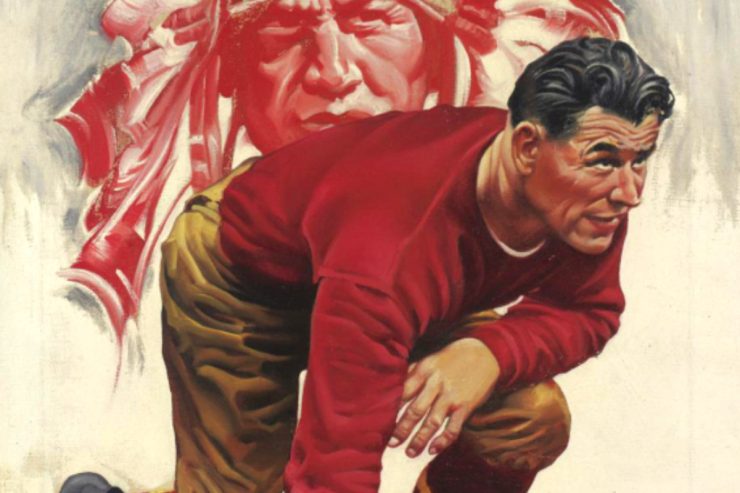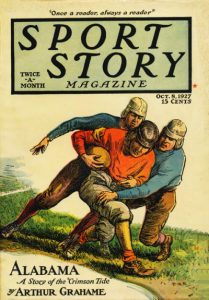 People celebrate the New Year in a host of fashions.
People celebrate the New Year in a host of fashions.
In New York City, thousands of people gather in Times Square to watch the ball drop at midnight. Elsewhere, they launch fireworks and ooh and aah.
People attend gatherings large and small, often counting down together the final ten seconds of the year. Then, depending on their mood or state of consciousness, they make a lot of noise, toss confetti into the air, share a kiss, or toast with some champagne. Or perhaps all of the above.
Some spend New Year’s Eve watching Dick Clark’s New Year’s Rockin’ Eve. Or sing “Auld Lang Syne.” Or simply listen to a recording of the tune by Guy Lombardo and His Royal Canadians.
The New Year means that it’s time for the Mummers Parade in Philly. On the Pacific side, it’s the Tournament of Roses Parade in Pasadena.
Down south, folks eat a serving of Hoppin’ John — a dish of black-eyed peas, pork, and rice — to bring good luck. In Pennsylvania Dutch country, they eat pork and sauerkraut. Others believe the color of their underwear will decide their fate in the coming year.
And then there’s football. The Rose Bowl, Sugar Bowl, Orange Bowl, Cotton Bowl, Peach Bowl, Fiesta Bowl, the Pulp Bowl . . . err . . . maybe not the last one. New Year’s means that it’s time for America to celebrate college football.
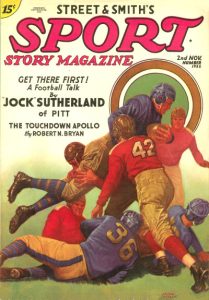 The American version of college football was introduced in November 1869 when Rutgers beat Princeton by a score of 6 to 4. However, it wasn’t until the 1880s that the sport began to resemble the modern version of football with scrimmage lines, downs, and eleven players on the field. At the beginning of the twentieth century, about 250 colleges were competing in the sport.
The American version of college football was introduced in November 1869 when Rutgers beat Princeton by a score of 6 to 4. However, it wasn’t until the 1880s that the sport began to resemble the modern version of football with scrimmage lines, downs, and eleven players on the field. At the beginning of the twentieth century, about 250 colleges were competing in the sport.
A boom in sports stadium construction following the First World War and the introduction of radio during the Roaring Twenties helped arouse interest in football. General interest magazines such as Collier’s and The Saturday Evening Post, increased newspaper coverage, and newsreel companies further fueled the sport’s growth. Football stories in the slicks and pulps such as Argosy, Short Stories, and Top-Notch Magazine, as well as college football movies in which the hero wins both the girl and the big game, also helped the sport gain in popularity. By the end of the decade, annual attendance at college football games was estimated at ten million people.
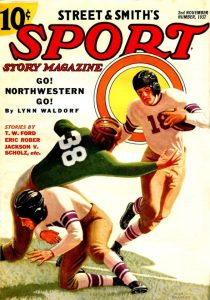 The twenties and thirties also saw the emergence of star players and coaches such as Red Grange and Pop Warner, as well as Knute Rockne and his “Four Horsemen.” After sportswriters played up the story of Rockne’s “Win one for the Gipper” halftime speech, there was no stopping the game. Not long thereafter, Fiction House debuted the Illustrated Football Annual, the first annual college football magazine and the preeminent college football guide for most of its 24-year run. College bowl games — which began with the Rose Bowl in 1902 — began to spread throughout the country during the 1930s. Today, football is the most popular sports event in the United States.
The twenties and thirties also saw the emergence of star players and coaches such as Red Grange and Pop Warner, as well as Knute Rockne and his “Four Horsemen.” After sportswriters played up the story of Rockne’s “Win one for the Gipper” halftime speech, there was no stopping the game. Not long thereafter, Fiction House debuted the Illustrated Football Annual, the first annual college football magazine and the preeminent college football guide for most of its 24-year run. College bowl games — which began with the Rose Bowl in 1902 — began to spread throughout the country during the 1930s. Today, football is the most popular sports event in the United States.
The game of football was introduced to readers of Street & Smith’s Sport Story Magazine with the magazine’s second and third issues. Then a reprint magazine — with stories gathered from People’s Ideal Fiction Magazine, The Popular Magazine, Top-Notch Magazine, and other titles in the publisher’s stable of pulps — Sport Story Magazine featured football covers on both its September 22 and October 8, 1923 numbers.
As college football and its professional counterpart — the American and National Football Leagues — were growing in popularity, the sport was one of many in the Sport Story Magazine spotlight. Auto-racing, basketball, boxing, golf, hockey, horse racing, rowing, skiing, tennis, track and field, wrestling, and even billiards and polo all shared the limelight with the gridiron game during the 1920s. Tops, of course, was baseball, “America’s Pastime.”
It wasn’t until the early thirties that football gained a measure of prominence in the Street and Smith sports pulp. Starting in 1931, football began to rule the covers of Sport Story Magazine from the beginning of October through the end of December. It continued to do so until the pulp’s final years. The last issue of Sport Story Magazine was dated July 1943.
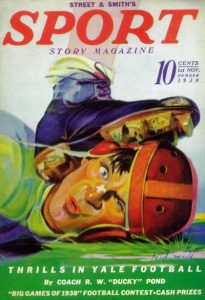 Join PulpFest in the coming year as we celebrate the centennial of Sport Story Magazine and a whole lot more at the DoubleTree by Hilton Hotel Pittsburgh – Cranberry in Mars, Pennsylvania. Click the “registration” button at the top of our website to learn how to become a PulpFest 2023 member. The convention begins on August 3 and runs through August 6.
Join PulpFest in the coming year as we celebrate the centennial of Sport Story Magazine and a whole lot more at the DoubleTree by Hilton Hotel Pittsburgh – Cranberry in Mars, Pennsylvania. Click the “registration” button at the top of our website to learn how to become a PulpFest 2023 member. The convention begins on August 3 and runs through August 6.
Your friends from PulpFest — Mike Chomko, Jack and Sally Cullers, Bill Lampkin, Sara Light-Waller, Craig McDonald, William Patrick Maynard, and Barry Traylor — would like to wish everyone a happy and healthy new year. See you again in a week.
Freeland A. Carter began to contribute to Street & Smith’s Sport Story Magazine as a cover and interior artist during the pulp’s early years. His work was usually signed only with his initials. He continued as the magazine’s lead artist until 1930 when sports cartoonist Feg Murray and artist and illustrator Earle K. Bergey rose to prominence.
Carter’s cover art for the October 8, 1927 number of Sport Story Magazine leads our post, while Bergey’s portrait of the incomparable Jim Thorpe — one of the early stars of American professional football — is our featured image. Bergey’s painting was used as the cover art for the December 1935, First Number of Sport Story Magazine.
Other artists whose work was featured by Sport Story Magazine include Joseph Farrelly (November 1935, 1st number), S. Cole Bradley (November 1937, 2nd number), J. Clark Work (November 1938, First Number), A. Leslie Ross, H. W. Scott, and Modest Stein (all unpictured). Other prominent artists who contributed covers to the magazine included Graves Gladney, George Gross, Arthur Jameson, and Hubert Rogers. The latter is best known for the many covers that he contributed to Astounding Science Fiction.
Derek Starr is a writer and popular culture enthusiast who began contributing to our website in 2022. He particularly enjoys the Fiction House pulps — including their three pigskin pulps — as well as the game of football. He most recently wrote about Fiction House regular, Les Savage, Jr. on the centennial of the author’s birth.

